3-Biphenylcarboxylic acid
- CAS NO.:716-76-7
- Empirical Formula: C13H10O2
- Molecular Weight: 198.22
- MDL number: MFCD00045846
- EINECS: 671-702-8
- SAFETY DATA SHEET (SDS)
- Update Date: 2024-03-18 17:23:41
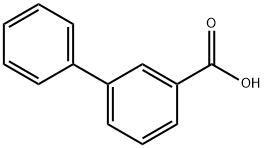
What is 3-Biphenylcarboxylic acid?
Chemical properties
off-white to beige crystalline powder
The Uses of 3-Biphenylcarboxylic acid
3-Biphenylcarboxylic Acid is a ortho-substituted biphenyl with inhibitory effect on glyceride synthesis. 3-Biphenylcarboxylic Acid is an anlogue of Diflusinal (D445751) and shows allosteric modulatory effects.
What are the applications of Application
3-Biphenylcarboxylic acid is an ortho-substituted biphenyl with inhibitory effect on glyceride synthesis
Properties of 3-Biphenylcarboxylic acid
| Melting point: | 164-169 °C |
| Boiling point: | 107 °C(Press: 2 Torr) |
| Density | 1.185±0.06 g/cm3(Predicted) |
| storage temp. | Sealed in dry,Room Temperature |
| solubility | soluble in Methanol |
| form | Crystalline Powder |
| pka | 4.14±0.10(Predicted) |
| color | Off-white to beige |
| Water Solubility | Insoluble |
| CAS DataBase Reference | 716-76-7(CAS DataBase Reference) |
Safety information for 3-Biphenylcarboxylic acid
| Signal word | Warning |
| Pictogram(s) |
 Exclamation Mark Irritant GHS07 |
| GHS Hazard Statements |
H302:Acute toxicity,oral H319:Serious eye damage/eye irritation |
| Precautionary Statement Codes |
P305+P351+P338:IF IN EYES: Rinse cautiously with water for several minutes. Remove contact lenses, if present and easy to do. Continuerinsing. |
Computed Descriptors for 3-Biphenylcarboxylic acid
| InChIKey | XNLWJFYYOIRPIO-UHFFFAOYSA-N |
New Products
(S)-3-Aminobutanenitrile hydrochloride 4-Methylphenylacetic acid N-Boc-D-alaninol N-BOC-D/L-ALANINOL Tert-butyl bis(2-chloroethyl)carbamate 3-Morpholino-1-(4-nitrophenyl)-5,6-dihydropyridin- 2(1H)-one Furan-2,5-Dicarboxylic Acid Tropic acid 1-Bromo-3,5-Di-Tert-Butylbenzene S-2-CHLORO PROPIONIC ACID ETHYL ISOCYANOACETATE 2-Bromo-1,3-Bis(Dimethylamino)Trimethinium Hexafluorophosphate 4-IODO BENZOIC ACID 3-NITRO-2-METHYL ANILINE 1-(2,4-DICHLOROPHENYL) ETHANAMINE (2-Hydroxyphenyl)acetonitrile 4-Bromopyrazole 2-(Cyanocyclohexyl)acetic acid 4-methoxy-3,5-dinitropyridine 1-(4-(aminomethyl)benzyl)urea hydrochloride 2-aminopropyl benzoate hydrochloride diethyl 2-(2-((tertbutoxycarbonyl)amino) ethyl)malonate tert-butyl 4- (ureidomethyl)benzylcarbamate Ethyl-2-chloro((4-methoxyphenyl)hydrazono)acetateRelated products of tetrahydrofuran
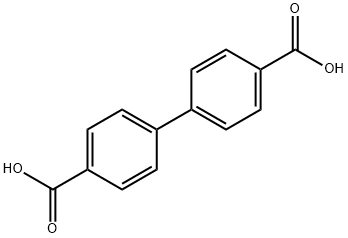

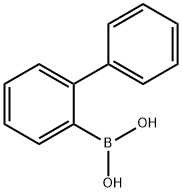

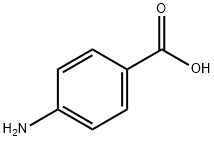
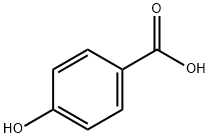


You may like
-
 Biphenyl-3-carboxylic acid 98% CAS 716-76-7View Details
Biphenyl-3-carboxylic acid 98% CAS 716-76-7View Details
716-76-7 -
 Biphenyl-3-carboxylic Acid CAS 716-76-7View Details
Biphenyl-3-carboxylic Acid CAS 716-76-7View Details
716-76-7 -
 1975-50-4 98%View Details
1975-50-4 98%View Details
1975-50-4 -
 2-HYDROXY BENZYL ALCOHOL 98%View Details
2-HYDROXY BENZYL ALCOHOL 98%View Details
90-01-7 -
 2-Chloro-1,3-Bis(Dimethylamino)Trimethinium Hexafluorophosphate 221615-75-4 98%View Details
2-Chloro-1,3-Bis(Dimethylamino)Trimethinium Hexafluorophosphate 221615-75-4 98%View Details
221615-75-4 -
 61397-56-6 CIS BROMO BENZOATE 98%View Details
61397-56-6 CIS BROMO BENZOATE 98%View Details
61397-56-6 -
 14714-50-2 (2-Hydroxyphenyl)acetonitrile 98+View Details
14714-50-2 (2-Hydroxyphenyl)acetonitrile 98+View Details
14714-50-2 -
 118753-70-1 98+View Details
118753-70-1 98+View Details
118753-70-1
Statement: All products displayed on this website are only used for non medical purposes such as industrial applications or scientific research, and cannot be used for clinical diagnosis or treatment of humans or animals. They are not medicinal or edible.